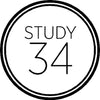In the years since its founding in the 1980s, Fairtrade has undoubtedly become one of the most recognised symbols of a fairer purchase.
But like many certifications, uncovering what it really means can be a challenge.
So here are some answers to a few basic questions…
What’s the difference between Fair Trade and Fairtrade?
Fair Trade
In short, ‘Fair Trade’ simply refers to the transparent and fair practice of purchasing goods by offering better trading conditions to marginalized communities, particularly in the developing world. It is not a certification, but rather a concept or a movement.
Fairtrade
‘Fairtrade’ is a trademarked term used to certify products and communications supported by Fairtrade International and its official partners. Products labelled with Fairtrade marks meet internationally agreed social, environmental and economic Fairtrade standards.
Fairtrade International is the global Fairtrade body, but most countries also have their own national organisation. In the UK, it is The Fairtrade Foundation.
How does Fairtrade work?
Fairtrade’s focus has always been people, and in particular, smallholders in agricultural communities in the less developed world.
Fairtrade’s mission is to assist farmers with small amounts of land (on average 2 acres) to get a fair price for what they grow (e.g. cotton, coffee, bananas, tea), by encouraging them to form co-operatives. These co-ops give the smallholders a collective voice which is more powerful in the market than if they were to trade as individuals.
Essentially Fairtrade is a process, rather than a product.
Fairtrade organisations then connect these co-ops with buyers looking to source Fairtrade and vice versa.
When it comes to fashion, what can be certified Fairtrade?
Cotton is the only textile fibre that can be certified Fairtrade today (but there have been some trials with silk in the past).
When it comes to certain commodities, of which cotton is one, a large-scale farm (or plantation) cannot be certified as Fairtrade because its size, theoretically, gives it the bargaining power to trade sustainably on its own – something a smallholder does not have.
Around 70% of the worlds cotton comes from smallholders.
How are you supporting farmers when you buy Fairtrade?
Firstly, you are supporting the ‘Fairtrade minimum’. This is a process by which co-operatives are guaranteed a fair and sustainable price for their cotton (at least the Fairtrade minimum price or higher, depending on the market).
Secondly, you are supporting the ‘Fairtrade premium’. This is an additional amount received by the co-operatives, which they then invest in their own communities however they see fit.
Members of the co-ops often invest their premiums in other forms of business. They use it, for example, as the seed money for an entirely different project to increase their income and benefit their entire community, such as building storage barns to rent out to other farmers, or investing in education and healthcare initiatives.
Like this post? Tweet it!
The aim of all of the posts in the DISCOVER section of STUDY 34 is to give you the knowledge to empower you to make better choices when buying clothing. By simplifying parts of the fashion industry that may seem complicated, I aim to inspire you to take more of an active interest in the stories behind your clothing.
Other STUDY 34 posts that may interest you:
